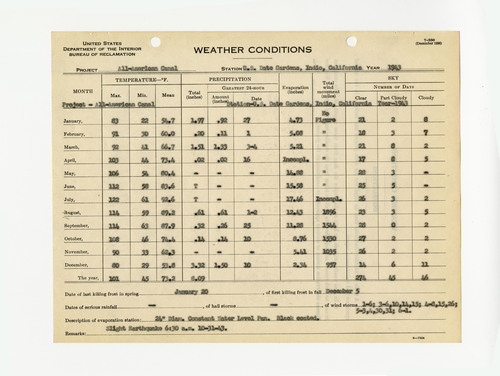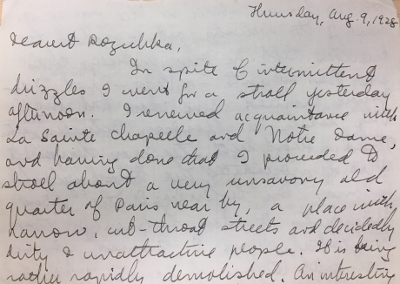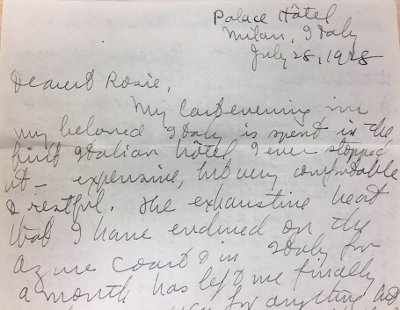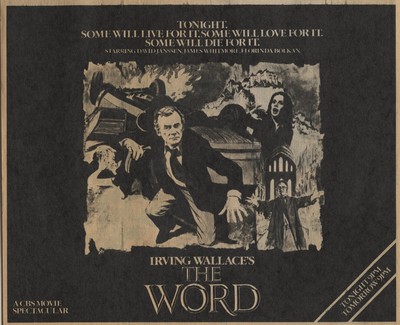This week, I spent a number of hours listening to an interview with John H. Nicholson. He was a City Councilman in Upland and Head Engineer at Sunkist, among other things. His interview spanned across three double sided tapes. I was impressed by the wealth of knowledge that he had about the area, the Sunkist Corporation, and about his own community. Nicholson’s remarks on the sheer number of goods that Sunkist produced got me thinking about how rapidly changes in how we produce and consume things occur. The corporation made almost 700 different products for their customers. Nicholson also mentioned that some products were very alike, he pointed to Tang as an example, sharing that the only difference might be the addition between it and a similar product might be the addition of more sugar. Sometimes it is hard to think about how and when some of the big social and economic changes in the world took place– there were not always this many options at the grocery store! But this interview highlighted a point in which specific industrial changes in the Sunkist corporation occurred in this region. As we begin to think about the future we want to leave for future generations, it is important to understand at which point changes occurred in our past.This can give us tools to be able to reflect on the alternatives for the future. This week I asked myself “Do we really need two different kinds of Tang?”
First week with CCEPS!
Troves of Data: Charting the Past
Normal
0
false
false
false
EN-US
X-NONE
X-NONE
This blog post entry was written by CLIR CCEPS Fellow, Vinh
Tran:
There are lots of
data that can be found in the pile of crumbling papers from the Willis S. Jones
boxes: hydraulic head, rainfall, water flow, soil composition, etc. The thing,
no one really turned them to graphs, probably because of the somewhat monstrous
handwriting (seriously, is that an F, an S, or a P?), lack of measurement units
(also, head of water [ft] or atm, pick one!), and the general unavailability of
our lord and savior, Excel! But now that we can gather and view them in one
place, producing charts and graphs can be easily done and may help us better
understand the geographical and geological characteristics of the region (if
you’re into that kind of stuff). Who knows, someone might actually use them for
their research (not me though). One last thing, who the hell thinks it’s a good
idea to use log√2 for the x-axis?
Metadata
I greatly enjoy my time working with metadata. When I tell people I work with
metadata, they quickly ask me, “What exactly
is metadata?” In
order to make collections of materials more accessible to the public, the
Library works to digitize and publish them online. As a CLIR CCEPS Fellow, I help with the creation of descriptive metadata for these electronic
documents. It’s an enormous project with lots of people working on different
tasks. It gives me a great chance to get immersed in a piece of California
history and to help make this information more readily available to researchers
and other users.
Normal
0
false
false
false
EN-US
X-NONE
X-NONE
/* Style Definitions */
table.MsoNormalTable
{mso-style-name:”Table Normal”;
mso-tstyle-rowband-size:0;
mso-tstyle-colband-size:0;
mso-style-noshow:yes;
mso-style-priority:99;
mso-style-parent:””;
mso-padding-alt:0in 5.4pt 0in 5.4pt;
mso-para-margin-top:0in;
mso-para-margin-right:0in;
mso-para-margin-bottom:10.0pt;
mso-para-margin-left:0in;
line-height:115%;
mso-pagination:widow-orphan;
font-size:11.0pt;
font-family:”Times New Roman”,”serif”;}
Date Farm Weather Reports
During the construction of the All-American Canal, in addition to tracking the production of produce grown in the Imperial Valley, regular weather reports were also taken. Below is a 1943 Weather Condition Report from the Date Gardens located in Indio, CA. This is an exciting find for researchers looking to examine global warming in the Imperial Valley.
These weather reports could also be compared to the agricultural production reports mentioned in a previous blog post to see if there is a correlation between weather and produce production. There are also other great finds hidden away in the Project Histories collection that are just waiting to be discovered!

Series: All-American Canal Project Histories, 1948-1954. Record Group 48: Records of the Office of the Secretary of the Interior, 1826-2009. National Archives Identifier: 2292770
Back with CCEPS!
Hello again! It’s me Marcus! This Friday, I was very excited to return to working on the Yao Family Papers at CCEPS. I genuinely enjoy going through documents, photographs, and personal letters and gradually formulating increasingly wholistic pictures of members of the Yao family in my mind.
This week, I processed a series of the Yao family’s official documents that came in a black leather briefcase. These documents include Norman’s University of Shanghai diploma from 1936, Anne’s love letter to Norman from 1943, their British Hong Kong ID cards from 1950s, US immigration documents in 1956, naturalization documents in the early 1960s, and even Norman’s certificate of death in the 1980s. They marked not only the change in their legal status, but also told the personal stories of the immigrant family.
Finishing processing this leather briefcase marks the completion of my work on the first half of the Yao Family Papers with the exception of the photo negatives, which require special processing actions. I am very excited to bring the second half of the collection from the Asian Library to the CCEPS room and continue my exploration of Yao family’s stories!
Have a nice week!
Marcus
Every family has its story.


Irving Wallace, On-screen
Before he made it big as a novelist, Irving Wallace spent the better part of a decade writing scripts for Hollywood films. His credits were unremarkable, and he found the work intellectually and financially unfulfilling. Nevertheless, Wallace would maintain connections to Hollywood for the duration of his career, and he apparently had few reservations about adapting his books for film and television. Starting with The Chapman Report in 1962 and continuing through CBS’s serialization of The Word in 1978, several of Wallace’s novels went on to enjoy a second life on the big and small screens.
Whatever their merits as art or entertainment, these adaptations highlight the cultural (and commercial) cachet of the Irving Wallace brand in the 1960s and 1970s. Whether in print or on-screen, his work seemed guaranteed to attract a large audience.

Labor in Citrus Groves and Globalization
This week, I spent time listening to an interview with Lonnie
Blanton. He was a citrus grower in the Upland area and his interview provided insights into the citrus growing process. Toward the middle of the interview, Blanton reflects on labor patterns. He suggests that the relationship between the United States and Mexico could be mutually beneficial especially in terms of a more relaxed immigration/labor policy. This comment made me think about current political discussions surrounding labor and migration. In addition, it related to some of the readings I have done for my Senior Seminar. In the course we have discussed the processes of globalization and particularly its relationship to capitalism. Listening to this interview made me reflect on the global patterns of economics (specifically the accumulation of capital wealth) and its effect on sociopolitical relationships over time.
Normal
0
false
false
false
EN-US
X-NONE
X-NONE
/* Style Definitions */
table.MsoNormalTable
{mso-style-name:”Table Normal”;
mso-tstyle-rowband-size:0;
mso-tstyle-colband-size:0;
mso-style-noshow:yes;
mso-style-priority:99;
mso-style-parent:””;
mso-padding-alt:0in 5.4pt 0in 5.4pt;
mso-para-margin-top:0in;
mso-para-margin-right:0in;
mso-para-margin-bottom:10.0pt;
mso-para-margin-left:0in;
line-height:115%;
mso-pagination:widow-orphan;
font-size:11.0pt;
font-family:”Calibri”,”sans-serif”;
mso-ascii-font-family:Calibri;
mso-ascii-theme-font:minor-latin;
mso-hansi-font-family:Calibri;
mso-hansi-theme-font:minor-latin;}